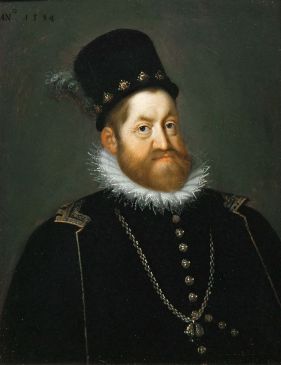 Holy Roman Emperor, Rudolf II, was born on this day in 1552 in Vienna. Rudolph was also King of Germany, King of Bohemia and King of Hungary. He became something of a recluse, rarely leaving his palace in Prague. He ruled at a difficult time when, as Holy Roman Emperor, he was meant to be Catholic, but a lot of his subjects were not. He tried to occupy the middle ground and it didn’t really work out too well for him. He was eventually deposed by his more ambitious brother. All this makes him sound rather dull, but he really wasn’t.
Holy Roman Emperor, Rudolf II, was born on this day in 1552 in Vienna. Rudolph was also King of Germany, King of Bohemia and King of Hungary. He became something of a recluse, rarely leaving his palace in Prague. He ruled at a difficult time when, as Holy Roman Emperor, he was meant to be Catholic, but a lot of his subjects were not. He tried to occupy the middle ground and it didn’t really work out too well for him. He was eventually deposed by his more ambitious brother. All this makes him sound rather dull, but he really wasn’t.
Rudolf was an enthusiastic patron of both the arts and sciences. This meant his court harboured all sorts of interesting people. Under his rule, Prague had a reputation for being full of dissidents, heretics and heliocentrists. The idea that the earth might go round the sun, instead of the other way round was not a popular one. In 1599, he made Tycho Brahe, who is probably my favourite astronomer ever, his court astronomer, after he was exiled from his home country of Denmark. But Rudolph was also fascinated by alchemy and the occult. Both of these subjects were, at the time, every bit as credible as astronomy. In the 1580s, he was visited by the famous mathematician and alchemist John Dee along with his questionable friend Edward Kelley, who Rudolph later locked up in a castle.
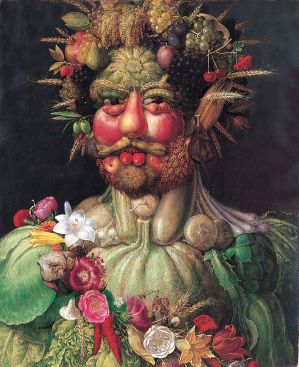 The Emperor was an extremely keen collector of both art objects and scientific instruments. As well as collecting well-known artists like Dürer and Brueghel, he commissioned many new pieces. This unusual portrait on the left is Rudolph as Vertumnus, the Roman god of the seasons. The artist’s name is Giuseppe Arcimboldo, he did a lot of paintings like this, but mostly they have titles like ‘winter’ or ‘the librarian’. This is the only one I could find that is of a specific person.
The Emperor was an extremely keen collector of both art objects and scientific instruments. As well as collecting well-known artists like Dürer and Brueghel, he commissioned many new pieces. This unusual portrait on the left is Rudolph as Vertumnus, the Roman god of the seasons. The artist’s name is Giuseppe Arcimboldo, he did a lot of paintings like this, but mostly they have titles like ‘winter’ or ‘the librarian’. This is the only one I could find that is of a specific person.
Rudolf amassed an amazing ‘Cabinet of Curiosities’ that included one hundred and twenty astronomical and geometrical instruments and more than sixty clocks. His collection was the finest in Europe and it occupied three large rooms of his palace. As the private collection of a recluse, not many people got to see it, so we can’t be sure of everything that it contained. Certainly he kept a live lion and a tiger, which roamed freely about the castle. We know this because there are documents relating to the payment of compensation to those who had been attacked by them or, if it had gone particularly badly, to their families. Rudolf himself insisted that he owned a grain of earth from which God made Adam, two nails from Noah’s Ark, a basilisk and some dragons.
Rudolf never married, but it is rumoured that he had numerous affairs at court with both men and women. He had several illegitimate children, one of whom seems to have suffered from schizophrenia and did some terrible things. Rudolf was a member of the Habsburg dynasty, who suffered terribly from inbreeding and do not have a happy history of mental stability. Rudolph himself seems to have suffered from bouts of melancholia, which was common in his family. Two of his favourite objects were a cup made of agate, which he believed to be the Holy Grail, and a six foot long horn, which came from a narwhal, but Rudolf thought it had belonged to a unicorn. When he was at his lowest he liked to take these two things, draw himself a magic circle with a Spanish sword, then just sit in it.
Some believe him to be one of the owners the Voynich Manuscript, a very interesting document which I mentioned briefly when I wrote about Edward Kelley. It has been carbon dated to some time in the early fifteenth century and is written in an unknown language. It has defied all attempts to translate it. Most of the illustrations are botanical and there are some with what look like star charts. But some are really weird. There are a lot of drawings of naked women that also feature an elaborate system of pipes. They seem to be conveying something really specific, but we have no idea what. So, naturally, they make everyone who sees it really want to know what it says. It seems to contain information about plants, medicine, biology, astronomy and cosmology. It doesn’t appear to be written in code, but rather in some, now lost, language that is possibly Middle Eastern in origin, but no other examples of the language have ever been found. If you’ve never come across it before, you can find a facsimile here
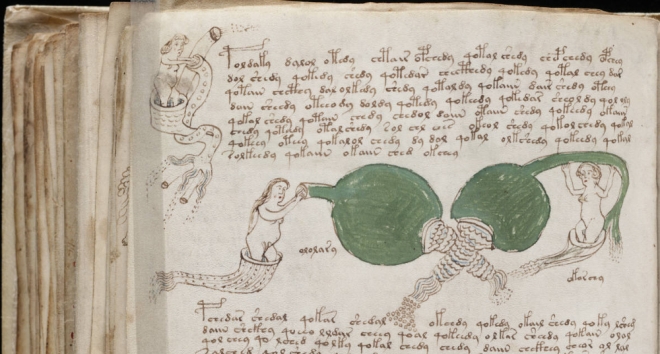 .
.
Rudolf, as you may gather, was a deeply superstitious man. Tycho Brahe once informed him that he shared a horoscope with his favourite lion cub. When it died, years later, the Emperor shut himself up in his rooms and refused all medical attention. He died three days later. His successors were less enthusiastic about his collection. It was packed away and forgotten about. Later, much of it was stolen when Swedish troops attacked Prague Castle in 1648 and many of its items later ended up in the hands of Queen Christina of Sweden.
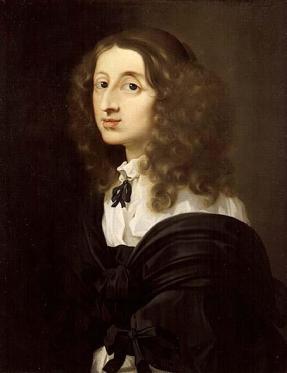 Today I want to tell you about Queen Christina of Sweden. She is something of a contradictory character. Not entirely good, but also a fascinating person. I didn’t want to celebrate her birth, because she caused a lot of problems for a lot of people. But celebrating her death isn’t really appropriate either, so today I am celebrating her abdication from the throne of Sweden on June 6th 1654.
Today I want to tell you about Queen Christina of Sweden. She is something of a contradictory character. Not entirely good, but also a fascinating person. I didn’t want to celebrate her birth, because she caused a lot of problems for a lot of people. But celebrating her death isn’t really appropriate either, so today I am celebrating her abdication from the throne of Sweden on June 6th 1654.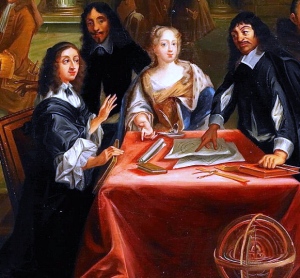 Christina was hugely interested in arts and sciences and, by 1649, had amassed an enormous collection of paintings, statues, manuscripts, coins and scientific instruments. She was equally interested in opera and theatre and was a bit of an amateur actress herself. Christina wanted to make her capital, Stockholm, the “Athens of the North” and she invited many learned men to her court. Most notably, she asked René Descartes. Christina had a lot of stuff she felt she needed to learn about. Her days were long and she decided the only time she could possibly see Descartes was at five in the morning. The climate and possibly the early starts didn’t agree with poor Descartes and, sadly, he caught pneumonia and died there in 1650.
Christina was hugely interested in arts and sciences and, by 1649, had amassed an enormous collection of paintings, statues, manuscripts, coins and scientific instruments. She was equally interested in opera and theatre and was a bit of an amateur actress herself. Christina wanted to make her capital, Stockholm, the “Athens of the North” and she invited many learned men to her court. Most notably, she asked René Descartes. Christina had a lot of stuff she felt she needed to learn about. Her days were long and she decided the only time she could possibly see Descartes was at five in the morning. The climate and possibly the early starts didn’t agree with poor Descartes and, sadly, he caught pneumonia and died there in 1650.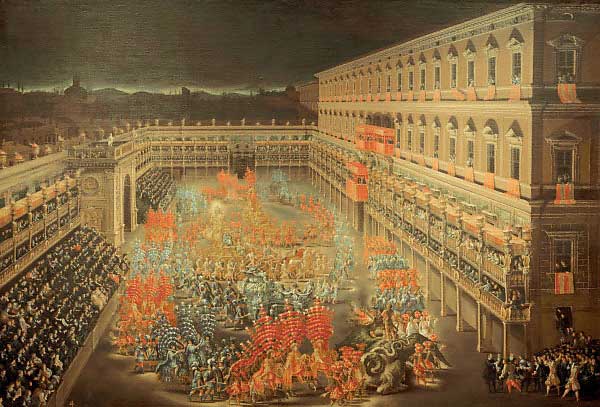
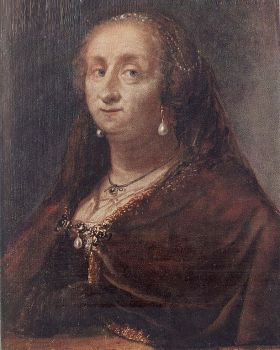 She continued to be a bit of a rebel, supplying the world with her unsolicited opinions, long after she had lost her rights to rule. When Louis XIV revoked the rights of French Protestants, she wrote him a letter of objection. In 1686, she made the Pope put an end to an awful practice of chasing Jews through the streets at Carnival. Then, she issued a declaration pronouncing all Roman Jews under her protection and signed it ‘the Queen’.
She continued to be a bit of a rebel, supplying the world with her unsolicited opinions, long after she had lost her rights to rule. When Louis XIV revoked the rights of French Protestants, she wrote him a letter of objection. In 1686, she made the Pope put an end to an awful practice of chasing Jews through the streets at Carnival. Then, she issued a declaration pronouncing all Roman Jews under her protection and signed it ‘the Queen’.